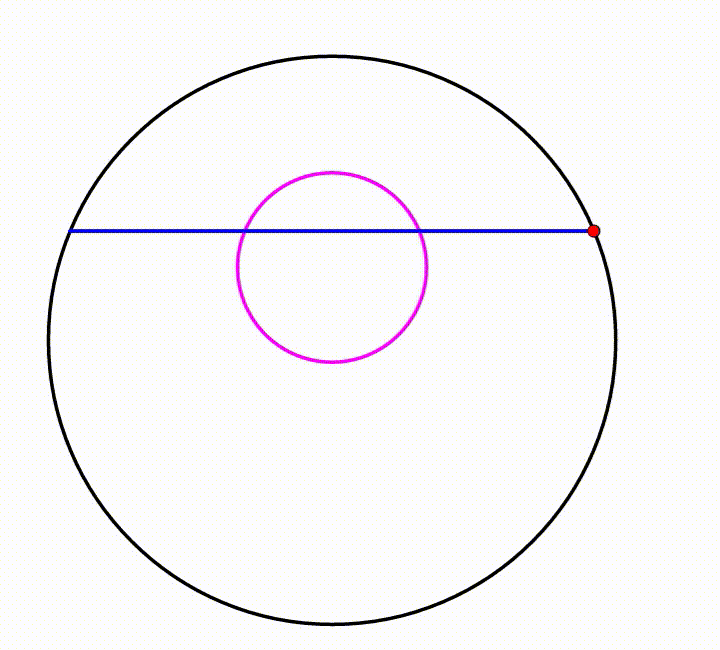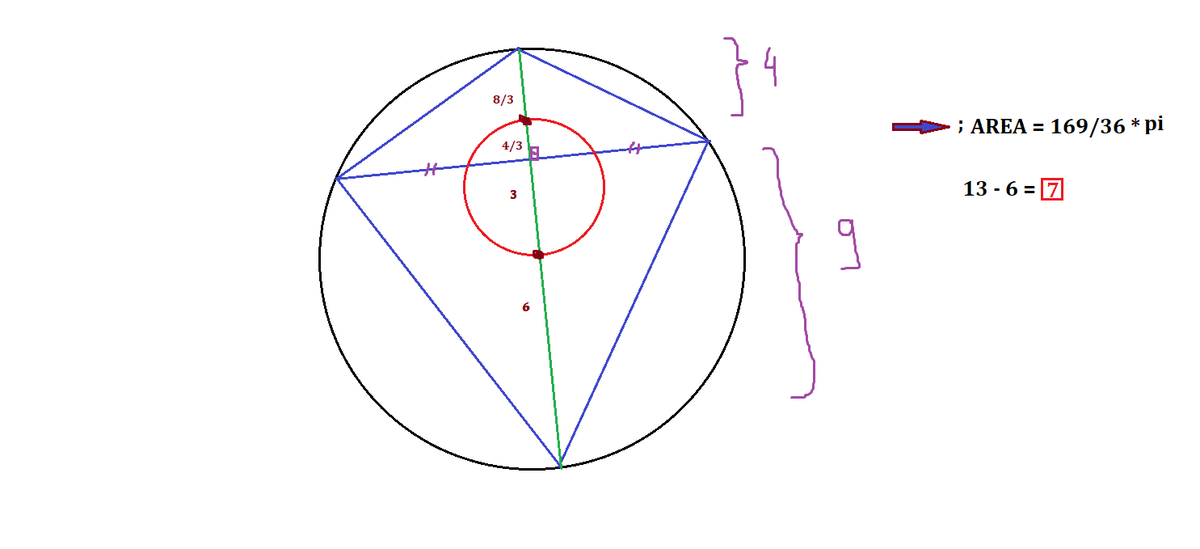Dynamic Geometry: P96
 The diagram shows a black circle. An horizontal blue chord is drawn creating two circular segments, their respective heights are
and
. The red point moves freely along the black circle. We use the blue chord and the red point to draw the blue triangle. The triangle's centroid traces a
locus
(purple curve). The area bounded by the purple curve can be expressed as
, where
and
are coprime positive integers. Find
.
The diagram shows a black circle. An horizontal blue chord is drawn creating two circular segments, their respective heights are
and
. The red point moves freely along the black circle. We use the blue chord and the red point to draw the blue triangle. The triangle's centroid traces a
locus
(purple curve). The area bounded by the purple curve can be expressed as
, where
and
are coprime positive integers. Find
.
The answer is 7.
This section requires Javascript.
You are seeing this because something didn't load right. We suggest you, (a) try
refreshing the page, (b) enabling javascript if it is disabled on your browser and,
finally, (c)
loading the
non-javascript version of this page
. We're sorry about the hassle.

[Updated with a simpler solution.] Let the center of the circle be O ; the triangle be A B C , where A B is the line dividing the circle into two segments; and D E be the diameter of the circle intersecting A B perpendicularly at F . Then D F = 4 , F E = 9 , and the diameter of the circle D E = D F + F E = 1 3 and the radius of the circle is 6 . 5 . Then O F = 2 . 5 and by intersecting chords theorem A F ⋅ F B = D F ⋅ F E = 4 ⋅ 9 ⟹ A F = F B = 6 ⟹ A B = 1 2 .
Let O be ( 0 , 0 ) , the origin of the x y -plane, C be ( u , v ) , and an arbitrary point on the locus be P ( x , y ) . Then A = ( − 6 , 2 . 5 ) , B = ( 6 , 2 . 5 ) , and u 2 + v 2 = 6 . 5 2 . Since P ( x , y ) is the centroid of △ A B C , then
⎩ ⎪ ⎨ ⎪ ⎧ x = 3 − 6 + u + 6 = 3 u y = 3 2 . 5 + v + 2 . 5 = 3 v + 5 ⟹ u = 3 x ⟹ v = 3 y − 5 u 2 + v 2 ⟹ x 2 + ( y − 3 5 ) 2 = 6 . 5 2 = ( 6 1 3 ) 2
Therefore the locus is a circle with center at ( 0 , 3 5 ) , radius 6 1 3 and area 6 2 1 3 2 π . Hence p − 6 = 1 3 − 6 = 7 .